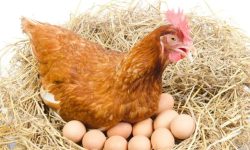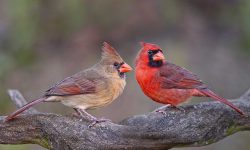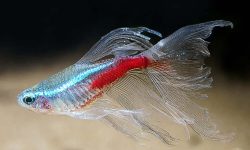While often underestimated, wild turkeys (Meleagris gallopavo) demonstrate a range of sophisticated behaviors that suggest advanced cognitive and sensory capabilities. This article explores the depth of turkey intelligence through a scientific lens, examining neurological structures, ecological strategies, and behavioral plasticity.

Neurobiology and Cognitive Architecture
Cognitive Hardware: Inside the Brain of a Wild Turkey
Behind the wary eyes and cautious strut of a wild turkey lies a brain wired for survival. While its overall brain-to-body ratio may not rival that of corvids or parrots, the architecture of its brain reveals a sophisticated neurological toolkit honed by evolution. At the heart of its spatial mastery is an enlarged hippocampus—the brain’s internal GPS—allowing these birds to remember the exact location of food caches, seasonal foraging grounds, and escape routes through complex terrain. Remarkably, studies have found that wild turkeys possess a significantly more developed hippocampal region than their domestic relatives, an adaptation driven by the demands of life in the wild.
Just as impressive is the nidopallium caudolaterale (NCL)—a dense cluster of neurons analogous to the mammalian prefrontal cortex. This is where cognition gets personal. The NCL governs executive functions: decision-making, impulse control, and the ability to learn from past outcomes. In wild turkeys, it’s the seat of strategy, helping them choose whether to fight or flee, explore or hide, trust or retreat.
Their world, however, is not just one of memory and judgment, but of intense visual vigilance. The optic tectum, paired with a high concentration of cone photoreceptors, gives turkeys crystalline visual acuity and an acute sensitivity to movement. This neural-visual synergy allows them to detect predators from astonishing distances, even while foraging with their heads down. In a flicker of leaves or shift of shadow, the turkey doesn’t just see danger—it computes it, reacts to it, and survives because of it.
Far from being the bumbling symbol they’re often portrayed as, wild turkeys operate with a brain built for nuance, quick calculations, and precise environmental reading—a quiet intelligence sculpted by forests, fields, and countless evolutionary pressures.
Split Minds: How Lateralization Sharpens the Turkey’s Survival Toolkit
Wild turkeys don’t just rely on keen eyesight or sharp instincts—they harness a divided yet coordinated brain that lets them do two things at once, literally. Through neural lateralization, each hemisphere of their brain handles different tasks, creating a system of cognitive multitasking that is both elegant and essential to their survival. This split processing power is visibly manifested in their eyes—one tuned to the ground, the other to the sky.
While the left hemisphere, connected to the right eye, zeroes in on detail—seeds, insects, or subtle textures in leaf litter—the right hemisphere, drawing input from the left eye, remains alert to potential threats on the horizon. The result is a remarkable kind of vigilance: a turkey can actively forage while simultaneously scanning for predators like hawks or coyotes, reacting in a heartbeat to either opportunity or danger.
This dual-channel awareness isn’t just about reflexes. It reflects a deeper neurological architecture where multimodal sensory information—visual cues, sounds, and spatial orientation—is processed in tandem without cognitive overload. It’s a system built not for comfort but for dynamic decision-making in complex, often dangerous environments. Such neural efficiency explains why turkeys can remain hyper-aware even in noisy flocks or while navigating thick underbrush.
In essence, the lateralized brain of the wild turkey functions like a biological surveillance system—half detective, half sentinel—where attention is constantly divided but never diminished. It’s not just brainpower; it’s brain coordination, wired for a life where every second and every signal could mean the difference between life and death.
Advanced Social Cognition
Reading Minds in Feathers: Social Foresight in Wild Turkeys
While true Theory of Mind—the capacity to understand that others have beliefs, desires, and intentions distinct from one’s own—is a cognitive milestone often reserved for primates and some corvids, wild turkeys may exhibit its rudimentary echoes. Their social behaviors suggest a remarkable ability to interpret, anticipate, and adapt to the mental states of others, particularly within the high-stakes arena of dominance and courtship.
Among males, these subtleties are especially apparent. Subordinate turkeys don’t just submit—they strategize. When a dominant rival enters the scene, a lower-ranking male might instantly mute his display, shift posture, or even withdraw entirely—not in response to direct aggression, but to the awareness of being watched. These shifts are often preemptive, based on who is present and how attentive they are, as if the subordinate male is weighing potential consequences in a silent social calculus.
Such behavior hints at mental modeling—the ability to factor in not just the physical presence of another, but their potential intentions and reactions. It’s a form of social intelligence that goes beyond instinct. The turkey isn’t merely reacting; it’s forecasting. In some cases, males even alter their courtship behavior depending on whether a dominant bird is within line of sight, suggesting they distinguish between private and public social contexts—a cognitive leap rooted in perspective-taking.
Though we may hesitate to claim turkeys possess full-blown Theory of Mind, their actions reflect a layer of social awareness that blurs the line between instinct and intuition. They are not just governed by pecking order but by perception, prediction, and a subtle reading of minds—however primitive those minds may seem.
Wisdom in the Flock: Social Learning and the Roots of Culture in Wild Turkeys
In the wild, knowledge is not written or spoken—it is observed, imitated, and lived. For wild turkeys, learning is not a solitary pursuit but a social inheritance, passed not through genes alone but through gestures, movements, and choices shared across generations. This process of cultural transmission, though subtle, is deeply embedded in the way these birds grow, survive, and adapt.
From their earliest days, poults (young turkeys) are attentive students. They trail their mothers closely, mimicking foraging techniques, memorizing safe paths through the underbrush, and adopting precise threat responses—when to freeze, when to scatter, when to remain still as stone. These maternal lessons are more than momentary reflexes; they are repeated patterns, etched into memory through exposure and repetition. Over time, these behaviors become local traditions, subtly varying from one population to another depending on terrain, predator presence, or food availability.
But learning doesn’t stop at the maternal bond. Within flocks, turkeys display a keen sensitivity to the successes of others. When one bird uncovers a hidden food source or navigates a new obstacle, others quickly follow suit—not by chance, but by observation. This kind of social imitation points toward more than simple mimicry; it reveals a brain capable of tracking outcomes, associating actions with benefits, and adopting innovation when it pays off.
In some cases, these learned behaviors spread horizontally through a group, creating pockets of shared knowledge that resemble rudimentary culture. Though not as elaborate as tool use in crows or vocal dialects in songbirds, the behaviors of wild turkeys suggest a foundation upon which more complex cultural traits could emerge.
In the shifting, often perilous landscapes they inhabit, wild turkeys rely not only on instinct but on accumulated experience, filtered through social interaction. They are not just born survivors—they are taught to survive. And in that teaching lies the quiet beginning of culture.
Communication and Semiotic Complexity
The Language of the Wild: Syntax and Meaning in Turkey Vocalizations
In the quiet of a forest clearing or the rustle of autumn underbrush, the calls of wild turkeys carry far more than noise—they transmit information, emotion, and intention. Far from being crude outbursts, these vocalizations reveal a surprisingly sophisticated system of acoustic communication, rich with structure, nuance, and purpose. Beneath the gobbles and yelps lies a repertoire that hints at something rare among non-songbirds: context-sensitive, referential signaling.
Turkeys produce an array of vocal sounds, each marked by distinct acoustic architecture and tied to specific circumstances. Alarm calls, for example, are not generic alerts—they are coded warnings, shaped by the source of danger. A short, sharp call signals a ground-based predator like a fox, while a different tonal pattern warns of aerial threats such as hawks. What’s more compelling is how flockmates respond differently depending on the call, indicating that they grasp not only the urgency but the type of danger—evidence of referential understanding, a cognitive ability once thought to be exclusive to primates and select birds like vervet monkeys or chickadees.
But turkey vocalizations extend far beyond survival. In social contexts, they employ a suite of softer, more emotionally modulated calls—low-frequency purrs during calm foraging, excited yelps when regrouping, or subtle clucks to maintain social cohesion. These sounds shift in pitch, duration, and rhythm depending on the caller’s familiarity with nearby birds, their physical proximity, and even emotional states such as agitation or comfort. This affective modulation suggests that turkeys aren’t just signaling facts—they’re expressing internal states, offering a window into a more complex communicative world than once assumed.
The presence of such vocal syntax—where call structure correlates consistently with meaning—and the ability to adjust tone and delivery based on context, implies a form of proto-language, rare in non-passerine birds. While turkeys may never compose elaborate songs or mimic human speech, their voices carry something just as profound: the capacity to encode and decode meaning in sound, a foundation upon which more advanced communication could evolve.
Multimodal Signaling in Courtship
Courtship in wild turkeys is a precisely choreographed display, blending color, sound, movement, and scent into a multisensory performance. Male turkeys, or toms, don’t simply gobble—they orchestrate signals designed to captivate the female’s senses on multiple levels.
Visually, iridescent feathers shimmer with ultraviolet reflections, while the snood and wattle shift color dramatically with emotional arousal, signaling dominance and reproductive fitness. These subtle, dynamic cues provide real-time insights into a male’s physiological state.
Sound adds another layer. The gobble, synchronized with wing dragging, tail fanning, and rhythmic strutting, reflects sensorimotor integration—a neural precision where movement and vocalization are tightly coordinated for maximum effect.
Emerging research also suggests a chemical component, with possible pheromone-like cues enhancing close-range communication.
Altogether, turkey courtship is a multimodal display of fitness and neural sophistication, where every element—light, sound, scent, and motion—works in concert. It’s not just showmanship—it’s evolution in performance, shaped by selection and executed with precision.
Spatial Intelligence and Navigational Mechanisms
Cognitive Mapping and Episodic-Like Memory
Wild turkeys move through forests and fields with purpose, guided not by instinct alone but by a mental blueprint—a sophisticated form of cognitive mapping. They remember where food, shelter, and danger lie, revisiting specific spots with a precision that suggests more than simple habit. These memories are event-based, capturing not just where something occurred, but what and when—key features of what scientists call episodic-like memory.
Turkeys can recall a berry patch that ripened after last week’s rain or avoid a site linked to a prior predator encounter. This predictive intelligence helps them make time-sensitive, risk-aware decisions that enhance survival. Underlying this ability is a well-developed hippocampus, capable of encoding spatial and temporal detail with remarkable accuracy.
Far from random wanderers, wild turkeys are strategic navigators, attuned to the rhythms of their landscape. Their memory is not just a record of the past—it’s a tool for shaping the future.
Geomagnetic and Celestial Orientation
Though not true migratory birds, wild turkeys demonstrate a strong ability to return to familiar territories after displacement. This suggests the use of a multimodal navigational system. Behavioral studies indicate they may rely on geomagnetic orientation, possibly mediated by cryptochrome proteins in the retina or magnetite-based receptors in the upper beak, similar to mechanisms found in pigeons and seabirds.
In addition to magnetic cues, turkeys also use the sun’s position and familiar landmarks to guide their movements. This combination of magnetic, celestial, and visual information allows for flexible and precise navigation, even across complex landscapes.
Ecological Intelligence and Behavioral Flexibility
Adaptive Foraging Strategies
Wild turkeys exhibit remarkable flexibility in their foraging strategies, adjusting their diet and behavior in response to seasonal availability and ecological pressures. During spring and summer, they prioritize protein-rich insects to support breeding and growth, while in autumn, their focus shifts to energy-dense mast like acorns and beechnuts. These transitions closely align with optimal foraging theory, as turkeys consistently select food sources that maximize caloric gain relative to effort.
Beyond food type, their choices reflect risk-sensitive foraging. Turkeys often avoid high-reward areas if predators are nearby, opting instead for safer but less bountiful patches. This suggests not only acute environmental awareness but also experience-based decision-making, where memory and prior encounters influence present choices—hallmarks of adaptive, context-dependent behavior.
Risk Assessment and Dynamic Decision-Making
Wild turkeys display highly adaptive antipredator behavior, tailoring their responses to the nature of the threat. When confronted with aerial predators like hawks, they often freeze in place or swiftly seek canopy cover, minimizing detection from above. In contrast, when faced with terrestrial predators such as foxes or coyotes, they either flush into trees or escape on foot using erratic zigzag patterns that hinder pursuit.
These context-dependent strategies are not reflexive alone—they rely on a blend of real-time sensory processing, environmental memory, and rapid decision-making. This level of behavioral plasticity reflects a sophisticated survival toolkit, allowing turkeys to dynamically evaluate threat types and choose the most effective escape tactic.
Intelligence in Evolutionary Context
Comparison with Other Galliformes
Among galliform birds, wild turkeys stand out for their behavioral complexity, surpassing relatives like pheasants and quail in both cognitive flexibility and social nuance. Their larger body size supports a proportionally larger brain, while their longer lifespan and extended parental care create conditions for prolonged learning and experience-based adaptation. This combination of life history traits provides the foundation for the evolution of advanced cognitive abilities in a bird order not typically recognized for intelligence. In this light, the wild turkey emerges as an evolutionary exception, where ecological demands and developmental opportunity have given rise to unexpected mental sophistication.
Domestication Syndrome and Cognitive Regression
Domesticated turkeys offer a stark contrast to their wild counterparts—not just in appearance, but in cognitive and behavioral capacity. Selective breeding has prioritized traits like body size and meat production, inadvertently diminishing traits related to mobility, perception, and social complexity. The result is a classic case of domestication syndrome, where animals exhibit reduced fear responses, dampened environmental awareness, and limited behavioral repertoire.
Neurologically, this process leads to a form of cognitive simplification. Brain regions involved in navigation, predator avoidance, and social interaction appear underdeveloped compared to those in wild turkeys. These changes not only affect individual functioning but also underscore how artificial selection can erode adaptive intelligence, reinforcing the striking behavioral divide between farm-raised and wild turkeys.
Conservation Implications and Ethical Considerations
Recognizing Cognitive Capacity in Management
Recognizing the intelligence and emotional complexity of wild turkeys carries critical implications for conservation policy. Practices such as relocation or population culling risk more than ecological disruption—they can fracture social bonds, interfere with spatial memory networks, and induce chronic stress in individuals. These impacts highlight the need to move beyond population numbers and habitat metrics toward a model of ethical wildlife management grounded in animal cognition and sentience.
By acknowledging turkeys as thinking, feeling animals, conservation efforts can better align with modern principles of animal welfare, ensuring that decisions account for both behavioral integrity and psychological well-being. In doing so, we not only protect ecosystems but also honor the minds that move within them.
Human-Wildlife Coexistence
As wild turkeys increasingly move into suburban and peri-urban environments, encounters with humans are becoming more frequent—and often more contentious. Yet rather than framing these birds as nuisances, a deeper understanding of their cognitive sophistication and behavioral needs offers a pathway to more effective and ethical coexistence.
Recognizing that turkeys respond to environmental cues, social dynamics, and learned experiences allows for the development of humane, evidence-based management strategies. Simple interventions—such as habitat buffers, visual deterrents, or thoughtful landscaping—can redirect turkey activity without harm. Just as important, public education that highlights their problem-solving skills, complex communication, and ecological roles may shift perceptions from annoyance to respect, fostering a culture of tolerance and coexistence rooted in behavioral insight.
Conclusion: A New Lens on an Old Bird
Wild turkeys offer a compelling case for reexamining how we define intelligence in animals. With keen spatial memory, social awareness, emotional communication, and behavioral flexibility, they challenge simplistic categorizations of “dumb game birds.” As cognitive ethology advances, the turkey may well earn a place among the more complex thinkers in the avian world. Their intelligence, once hidden beneath cultural stereotypes, is now emerging as one of their most remarkable traits.






